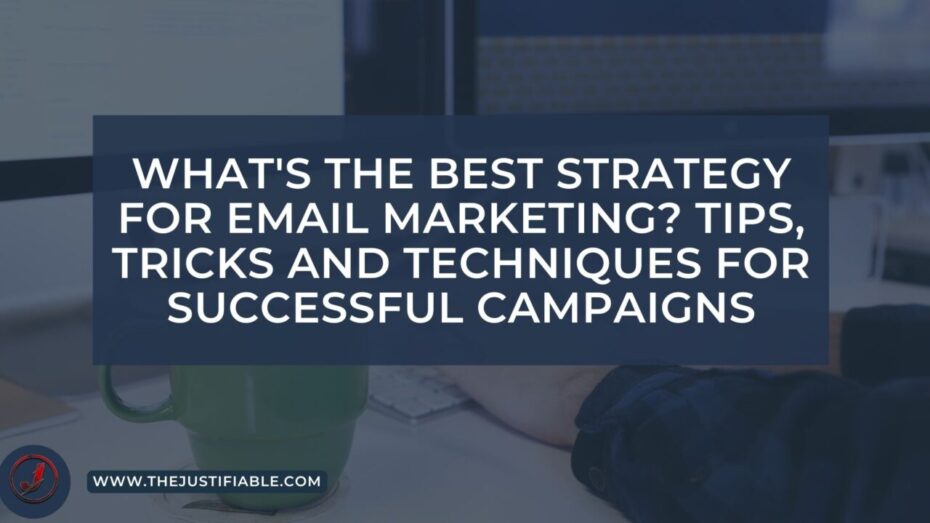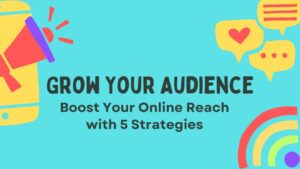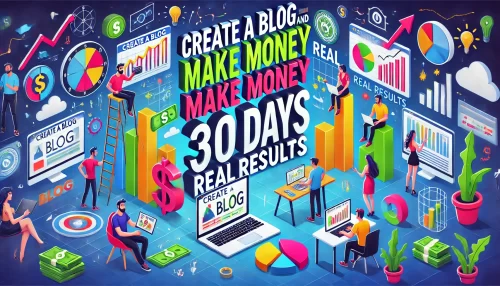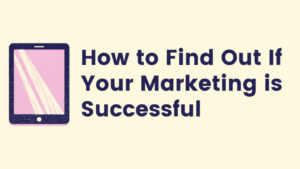Table of Contents
The best strategy for email marketing – Email marketing has been around for a long time, and for good reason: it’s one of the most effective ways to reach customers and promote your business. However, with so many businesses competing for attention in the inbox, it can be difficult to stand out and make an impact.
In this article, we’ll explore the best strategies for email marketing, including tips, tricks, and techniques that will help you create successful campaigns that drive engagement and results.
Why Email Marketing is Important for Your Business
Before we dive into the best strategies for email marketing, it’s important to understand why email marketing is so crucial for businesses of all sizes. Here are a few reasons why email marketing should be a top priority for your business:
- Reach: With more than 4 billion email users worldwide, email is one of the most widely used forms of communication. By leveraging email marketing, you can reach a vast audience of potential customers and build brand awareness.
- Cost-Effective: Compared to other marketing channels, email marketing is incredibly cost-effective. You can send targeted, personalized messages to your audience without breaking the bank.
- ROI: According to recent studies, email marketing generates an average ROI of $42 for every $1 spent. That’s a staggering return on investment that can help you grow your business and drive revenue.
- Engagement: Email marketing allows you to engage with your audience on a personal level, delivering messages that are tailored to their interests and needs. This can help you build stronger relationships with your customers and drive long-term loyalty.
The Best Strategies for Email Marketing
Now that we’ve covered why email marketing is important, let’s explore some of the best strategies for creating successful email campaigns. These tips and techniques will help you create engaging, effective emails that resonate with your audience and drive results.
Define Your Goals and Objectives
Before you start crafting your emails, it’s important to define your goals and objectives. What do you want to achieve with your email marketing campaigns?
Are you looking to drive sales, build brand awareness, or increase customer loyalty? By setting clear goals and objectives, you can ensure that your emails are designed to meet those specific objectives.
Build a Targeted Email List
To make the most of your email marketing campaigns, it’s important to build a targeted email list. Rather than blasting your messages to a generic list of email addresses, focus on building a list of subscribers who are interested in your brand and have opted in to receive your communications.
Personalize Your Emails
Personalization is key when it comes to email marketing. By tailoring your messages to each recipient, you can create a more engaging and relevant experience that resonates with your audience.
Consider using dynamic content, such as personalized recommendations or targeted offers, to make your emails even more effective.
Optimize Your Subject Lines and Preview Text
Your subject line and preview text are the first things your recipients will see when they receive your email. As a result, it’s crucial to optimize these elements to capture their attention and encourage them to open your message.
Consider using action-oriented language, personalization, and clear calls-to-action to make your subject lines and preview text more compelling.
Create Engaging Content
The content of your email is what will ultimately drive engagement and encourage your audience to take action. Consider using a mix of visuals and text to create a visually appealing and informative email that keeps your recipients engaged.
Additionally, make sure your content is relevant to your audience and aligned with your goals and objectives.
Design for Mobile Devices
With more than 50% of email opens happening on mobile devices, it ‘s crucial to design your emails with mobile users in mind.
This means creating mobile-friendly layouts and ensuring that your emails are easy to read and interact with on smaller screens. Consider using responsive design techniques to ensure that your emails look great on any device.
Test and Optimize Your Campaigns
Email marketing is an iterative process, and it’s important to continually test and optimize your campaigns for maximum effectiveness. Use A/B testing to experiment with different subject lines, calls-to-action, and content to see what resonates best with your audience.
Additionally, track and analyze your email marketing metrics, such as open rates and click-through rates, to identify areas for improvement and optimize your campaigns over time.
Segment Your Audience
Segmenting your email list allows you to tailor your messages to specific groups of recipients based on their interests, behaviors, or demographics. This can help you create more targeted, personalized campaigns that resonate with your audience and drive better results.
Consider segmenting your list based on factors such as past purchase history, geographic location, or engagement level.
Use Automation
Email automation allows you to send targeted, personalized messages to your subscribers based on their behavior or actions. For example, you could automatically send a welcome email to new subscribers, or a follow-up message to customers who abandoned their shopping carts.
By automating your emails, you can save time and resources while still delivering timely, relevant messages to your audience.
How Can Email Marketing Fuel Your Overall Inbound Strategy
Before we dive into how email marketing can fuel your overall inbound strategy, it’s important to understand what inbound marketing is and why it’s important for businesses. Inbound marketing is a customer-centric approach to marketing that focuses on creating valuable content and experiences that attract, engage, and delight customers.
Rather than interrupting potential customers with unwanted messages, inbound marketing seeks to build trust and authority by providing helpful information and solutions to their problems. Inbound marketing is important for businesses for several reasons:
It’s more effective
Traditional outbound marketing techniques, such as cold calling and direct mail, are becoming less effective as consumers become more resistant to interruptions and spam.
Inbound marketing, on the other hand, focuses on providing value and building relationships with customers, which can lead to greater trust, engagement, and loyalty.
It’s more cost-effective
Inbound marketing is generally more cost-effective than traditional outbound marketing techniques. By creating valuable content and experiences that attract customers organically, businesses can reduce their reliance on expensive advertising and marketing tactics.
It’s more sustainable
Inbound marketing is a long-term strategy that focuses on building relationships with customers over time. By creating valuable content and experiences that address customers’ needs and pain points, businesses can build a loyal customer base that will continue to engage with their brand for years to come.
How Email Marketing Can Fuel Your Inbound Strategy
Now that we understand the importance of inbound marketing, let’s explore how email marketing can help fuel your overall inbound strategy.
Build and Nurture Your Email List
One of the key benefits of email marketing is the ability to build and nurture a targeted email list. By providing valuable content and incentives, businesses can encourage potential customers to opt-in to their email list, providing them with a valuable channel for ongoing communication.
Once you’ve built your email list, it’s important to nurture your subscribers with relevant, personalized content. By sending targeted messages that address their needs and interests, you can build trust and authority with your audience, increasing the likelihood that they will engage with your brand and make a purchase.
Provide Value with Your Email Content
To fuel your overall inbound strategy, it’s important to provide value with your email content. Rather than focusing solely on promotional messages and sales pitches, use your email marketing campaigns to provide valuable information, tips, and resources that address your subscribers’ needs and pain points.
By providing value with your email content, you can establish your brand as a thought leader in your industry, building trust and credibility with your audience. This can help you attract more leads, increase engagement, and drive revenue over time.
Use Email to Drive Traffic to Your Website
Email marketing can also be a powerful tool for driving traffic to your website. By including links to relevant content and resources in your email messages, you can encourage subscribers to visit your website and engage with your brand.
Additionally, by using targeted calls-to-action in your email messages, you can direct subscribers to specific landing pages or offers on your website, increasing the likelihood that they will convert and become a customer.
Use Email to Support Your Other Inbound Channels
Email marketing can also be used to support your other inbound channels, such as social media and content marketing. By including links to your social media profiles in your email messages, you can encourage subscribers to follow you on other platforms, increasing your overall reach and engagement.
Similarly, you can use email to promote your content marketing efforts, such as blog posts and whitepapers. By including links to your latest content in your email messages, you can drive traffic to your website and increase the visibility of your content.
Measure and Optimize Your Email Campaigns
To ensure that your email marketing efforts are fueling your overall inbound strategy, it’s important to measure and optimize your campaigns over time. By tracking key metrics such as open rates, click-through rates, and conversion rates, you can identify areas for improvement and adjust your strategy accordingly.
For example, if you notice that certain email campaigns are generating low engagement, you may need to adjust your messaging or target a different segment of your audience. Or, if you notice that certain types of content are performing particularly well, you may want to focus on producing more of that content in the future.






